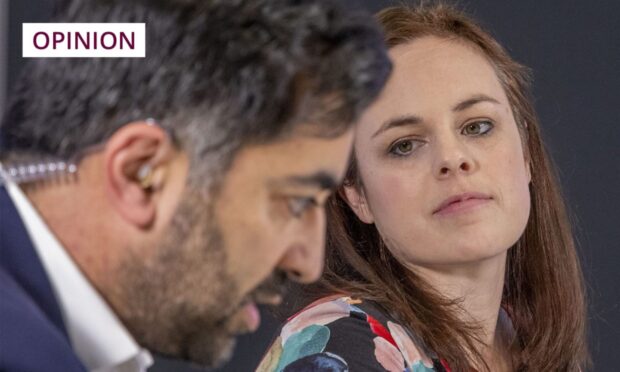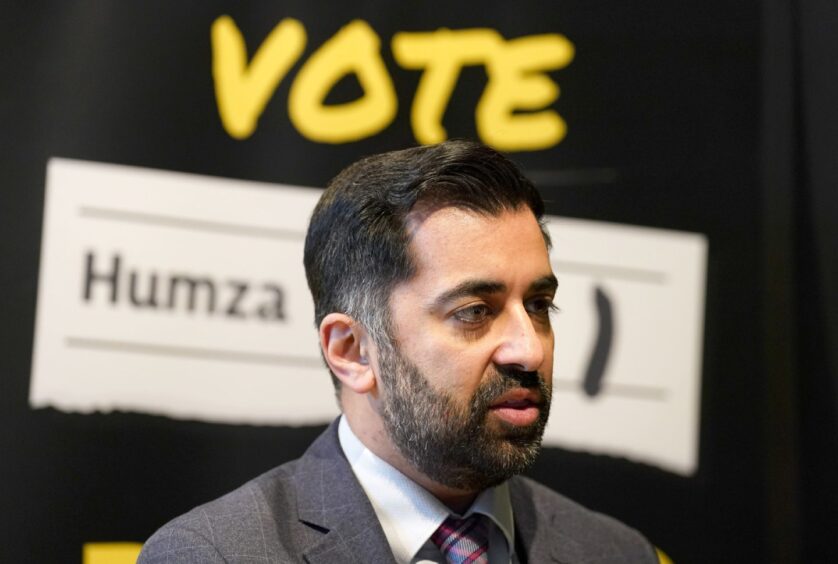Humza Yousaf will face a crunch test in 2024 – with a clear goal for the General Election already set in stone.
Political leaders normally shy away from questions about what success will mean in terms of seat numbers at elections.
Electoral math is notoriously difficult to predict. While polls may provide some insight into support nationally, drawing such an unambiguous line between winning and losing pre-election is a serious risk for any leader.
This is especially true for Humza Yousaf, who cannot “win” a Westminster election in the same way as Labour or the Conservatives.
But at the SNP’s conference in October 2023, the party did just that. It’s independence strategy requires them to secure a majority of seats – 29 – to “begin negotiations” for independence.
Clearing this hurdle will all but guarantee Humza Yousaf leads his party into the next Scottish Parliament election, potentially extending his time as First Minister.
However, internal critics of the first minister clearly view the General Election as the key test for Humza Yousaf’s leadership, and despite him successfully navigating serious challenges – including the delivery of a tough budget – it will be this moment that decides his future.
Failure, then, could be brutal. Deep divisions over crucial issues were exposed in the race to succeed Nicola Sturgeon, and tensions continue unabated inside the party.
Mr Yousaf himself told his party to set him this test, and failing it would almost certainly put his position at risk despite his authority as first minister coming from how many SNP MSPs there are in Holyrood.
No clear Holyrood successor
Despite this, the lack of clear Holyrood successor, at least publicly, could prove important.
Highland MSP Kate Forbes, who came a narrow second in the leadership contest, is seen as the most likely challenger.
But even if the General Election results are disastrous for the SNP, Ms Forbes is still seen as being unlikely to command enough support from her MSP colleagues.
During the leadership campaign, Ms Forbes admitted she would have voted against the legislation that made way for equal marriage, leading many in the party to withdraw their support.
A member of the Free Church of Scotland, she also said that having children outside of marriage is “wrong”.
Several current ministers now say privately they would struggle to serve in a Scottish Government led by Ms Forbes, in part because of these views on social issues.
It is the much smaller electorate of SNP MSPs that will ultimately choose the next first minister, and those planning for a second leadership election are aware of this challenge Kate Forbes would have.
So to they must accept that, apart from Ms Forbes, there are no other obvious contenders at Holyrood.
Those seen as most likely to replace Mr Yousaf are all MPs, including Westminster leader Stephen Flynn, and would be unable to take up post as first minister.
Such a situation would leave the party in the unenviable position of having a party leader at Westminster, with an MSP “filling in” as the leader of the Scottish Government.
While those plotting for a potential leadership race to replace the first minister may find the moment is right in 2024, key questions about who and how remain unanswered.
Humza Yousaf may just be the year’s great political survivor as a result.
Scotland cannot sleepwalk into fresh drugs death crisis
The lesson from Scotland’s drug deaths crisis that saw Dundee become the most deadly place in the world for drug users is clear – we were too slow.
Experts and campaigners warned repeatedly about alarming trends among those in the grip of addiction, but stigma drove a response that saw them criminalised and placed into a justice system completely unequipped to support them.
Now – as public health experts warn of the risk of deadly nitazene compounds – we cannot afford not to learn that lesson.
Despite this, experts have already said Scotland has been “slow to heed warnings” about the super-strength synthetic opioids which have been linked to 9 deaths in the last six months alone.
Never approved for use in the UK, and originally developed as a painkiller, the National Crime Agency believe the drug is being produced in illicit Chinese labs before being shipped to the UK in the post.
Dealers then mix it into common street drugs like heroin as well prescription medicines that are sold illegally like diazepam and xanax.
Unsuspecting users could overdose unknowingly, either because they don’t know they are taking something tainted by nitazenes or because they are unaware of the strength.
Our leaders must tackle this emerging trend head on, and be unafraid to try something new to respond.
Charities supporting drug users say this could include providing a testing service for people to check for the presence of nitazenes or other synthetic opioids.
While this would not be uncontroversial, the proposal should not be shied away from on that basis alone.
We have failed this challenge once already, it would be unforgivable to do so again.













Conversation